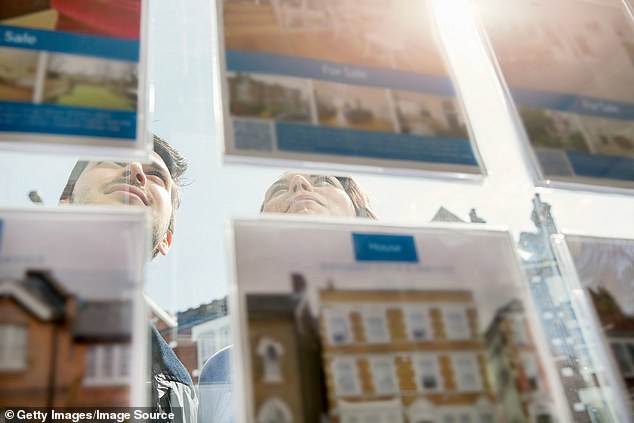Table of Contents
Only one in eight potential first-time buyers can afford the average price of a starter home in their area, new analysis reveals.
High house prices, rising living costs, insufficient savings, rising rents and mortgage rates have combined to put home ownership out of reach for many young people, according to research by Skipton Building Society and analysts at Oxford Economics.
It has been revealed that almost four in five potential first-time buyers do not have enough savings for the deposit needed to afford a property in their area.
In-depth analysis: The study analyzed the cost of buying and maintaining a home, including mortgage and rental costs and household bills, maintenance and purchasing household items.
The challenge is greatest for potential first-time homebuyers who are in the bottom 25 per cent of earners – those earning £22,850 or less a year.
For these first-time buyer households, fewer than one in 100 can afford to take the first step towards ownership in their local area.
But even among those earning more than £71,250 a year – the top 25 per cent – only 56 per cent still cannot afford to buy their first home in their local area.
Rising house prices relative to incomes over the past 20 years have caused the average deposit size to rise by around 160 per cent since 2005, according to the Building Societies Association.
The typical successful first-time buyer now needs a deposit of around £60,000, although this varies from £27,000 in the North East of England to £144,000 in London.
The Skipton Group report found that nearly four in 10 renters spend 45 per cent or more of their income on rent and other essential housing costs, creating a barrier to saving for a deposit.
Since January 2021, the average household rent has risen by almost a third, from £981 a month to £1,299 a month, according to the HomeLet Rent Index.

Price-outs: Nearly four in five potential first-time buyers don’t have the deposit needed to afford property in their local area, according to Skipton Group
Where is housing least affordable for first-time buyers?
First-time home buyers are the most challenged in the West Midlands to afford a home, according to the study.
The typical home there is worth just over £250,000, less than the UK average of around £285,000.
However, Skipton said a combination of low savings levels and rising house prices in the region had put home ownership out of reach for an increasing number of people.
London, where the average home costs £523,000, was also found to be one of the least affordable places, largely due to high house prices.
Wales was also ranked as one of the most unaffordable areas for local first-time home buyers, despite the average house price being £216,000.
This is because lower average income levels in Wales make it harder for people to get a mortgage of the size they need.
In contrast, first-time buyers face the best prospects in Scotland, driven by lower house prices for first-time buyers.
The East of England is also one of the most affordable areas for first-time home buyers, despite the average cost of a home being £337,000.
This is due to higher average household incomes and savings large enough to offset high home prices for first-time buyers.
Inflation hurts first-time homebuyers
Despite recent wage growth and inflation returning to the Bank of England’s 2 percent target, the study says affordability is almost exactly where it was at the start of 2020, with little sign of improvement on the horizon.
Since 2021, the inflation rate has risen by more than 20 percent, according to the Bank of England’s inflation calculator.
This means that people typically have to pay more than £120 to buy the same basket of goods that they could buy for £100 in 2021.
This has eroded what people can set aside each month as a deposit.
Stuart Haire, chief executive of Skipton Group, said: ‘Being able to have a place to call home is widely recognised as one of the most significant issues facing millions of people across the country.
‘For some, our findings paint a bleak picture, especially for first-time homebuyers.
‘The combination of high housing costs, insufficient savings and significant regional disparities underscores the urgent need for collaborative and targeted interventions to support aspiring homeowners.’
Some links in this article may be affiliate links. If you click on them we may earn a small commission. This helps us fund This Is Money and keep it free to use. We do not write articles to promote products. We do not allow any commercial relationships to affect our editorial independence.

